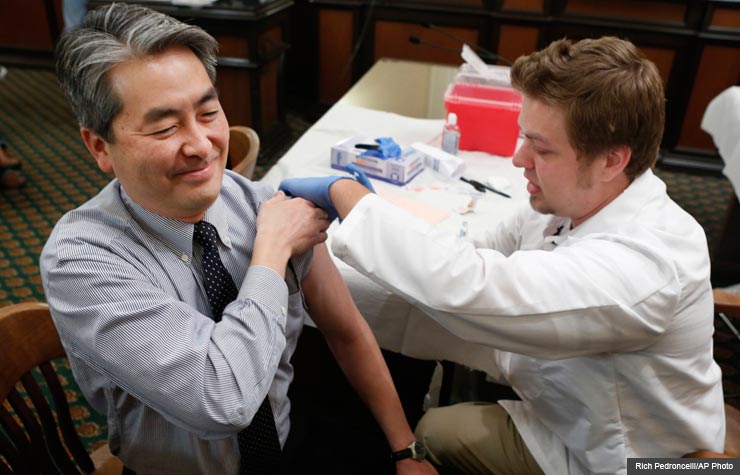Staying Fit


How do we know it's fall?
It's not the leaves turning, it's the "get your flu shot" signs that are popping up everywhere from doctor's offices to pharmacy clinics.


AARP Membership— $12 for your first year when you sign up for Automatic Renewal
Get instant access to members-only products and hundreds of discounts, a free second membership, and a subscription to AARP the Magazine.
Subscribe to the AARP Health Newsletter
This year the menu of flu vaccine choices is even longer, so for people age 50 and up, the big question is: Which one should I get?
New for the 2013-14 flu season is a so-called quadrivalent shot that protects against four strains of flu instead of the usual three.
Also new are injectable "cell-based" flu vaccines produced with novel technologies that don't involve growing the flu virus in chicken eggs — a safe choice for those allergic to eggs.
There's also a high-dose flu shot for people age 65 and older, introduced in 2010, and a tiny-needle version rolled out in 2011 that injects the active ingredient just under the skin (an appealing alternative for people who dread shots). There is a nasal spray flu vaccine, but it's approved only for individuals ages 2 to 49.
"This is the first time that people have had to worry about which one to choose," says John Treanor, M.D., a flu vaccine expert at the University of Rochester Medical Center. "In the past we just said, OK, you should get a flu vaccine. That's simple. Now you have all these different options without evidence that would really favor one over the other."
Indeed, the Centers for Disease Control and Prevention (CDC) and most vaccine experts stress that for the great majority of people, the regular flu shot — a standard-dose "trivalent" vaccine protecting against three flu strains — is perfectly fine.
"Getting some type of vaccine is important," according to Richard K. Zimmerman, M.D, a flu vaccine specialist at the University of Pittsburgh. "Which one you get matters less."
Price can also be a consideration. Medicare Part B covers any flu vaccine appropriate for people 65 and older with no copay. Some private insurance plans also don't charge a copay for flu shots. For the uninsured paying cash at the pharmacy, the high-dose version retails for nearly twice the price ($50-$60) of the standard dose ($25-$35). The quadrivalent shot sells for several dollars more than the standard-dose trivalent shot.

































































More on Health
5 Ways to Boost Your Immune System
Science-backed tips for strengthening your immune response quickly and effectivelyYour ACA Health Insurance Enrollment Checklist
Guide to understanding costs, coverage, subsidies and how to sign up for a plan